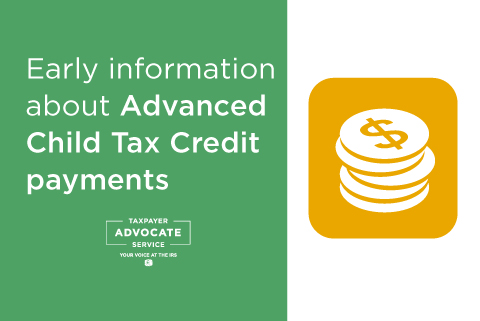

The information below is not intended to be considered as official guidance. Its purpose is solely for sharing information based in the legislation that is being worked on now, in an effort to help taxpayers, tax professionals, and others understand what they can generally expect and when more detailed information might be made available.
The American Rescue Plan Act of 2021 recently increased the amount of the Child Tax Credit for most taxpayers from $2,000 to $3,000 for the 2021 taxable year only. In the case of a qualifying child who has not attained the age of 6 as of the close of the calendar year, the credit is increased to $3,600. In addition, the term “qualifying child” is broadened to include a qualifying child who has not attained the age of 18 (in other years, a qualifying child is one who has not attained the age of 17 by the end of the calendar year). Also, for the 2021 taxable year only, the child tax credit is made fully refundable for taxpayers with a principal place of abode in the United States for more than one half of the taxable year or taxpayers who are bona fide residents of Puerto Rico.
In the legislation, the IRS is directed to “to establish a program to make periodic advance payments (of equal amounts) of the child tax credit to eligible taxpayers.” Periodic advance payments are only to be made for months between July 1, 2021 and December 31, 2021. It also directs the IRS to set up an online portal to allow certain information to be updated. However, because not all taxpayers have online access, the IRS will also need to establish an alternative process for other taxpayers to update their information – for equity and fairness.
Below is some information that we hope will help answer some common questions you may have, based on information available as of this point in time.
That depends on each taxpayer’s situation. It won’t be an easy calculation either, as it depends on each individual person’s household factors, like adjusted gross income, the number and age of qualifying children, etc. Also, the advanced payments can generally, with some exceptions, only be issued in equal amounts, that are up to 50 percent of the credit of the estimated eligible total credit for each taxpayer situation. So, stay tuned for the more detailed eligibility and calculation information once official guidance is issued.
The law directs that advance payments be periodically distributed between July 1, 2021 and December 31, 2021 but does not specify if those should be monthly or on some other type of schedule, just that they are generally “equal.” So, this is another part of the new process that is being determined now.
Payments must be distributed “between July 1, 2021 and December 31, 2021”. So that exact start date for the first payment is yet to be determined and will depend, in part, on how long of a time frame the IRS will allow for taxpayers to opt-out or update certain account related information, such as banking account and address information, before the payments start.
No. You do not need to take any action now.
The IRS plans on sending a letter to taxpayers who are potentially eligible (based on data from a 2020 or a 2019 tax return) with more program details, including how to opt-out, as well as sharing overall program information when the letter is ready. So, wait for official IRS guidance and instructions to come. More information is expected to be released in late April or early May. Please do not call the IRS or TAS, as there is no additional information anyone can share until that official information is shared publicly.
Yes. The law directs the IRS to offer an opt-out opportunity for taxpayers who do not want to receive advanced payments. When and how a taxpayer can do that is still being worked out. Information on exactly how to claim the credit on 2021 tax returns, for taxpayers that do opt-out, will be shared as we get closer to the end of the year and the 2021 tax forms and instructions are finalized.
The IRS is aware that family situations vary and is working hard, in partnership with TAS, to find solutions to address as many different types of situations as possible. Please read the above section on Do I need to do anything now? for more information.
Do not look to unofficial websites, people or businesses for options. Wait for and follow only official IRS information found on IRS.gov. Do not fall prey to any fictitious offers to get your money faster or earlier. Only the IRS can issue these payments and the earliest any payments could potentially be issued is after July 1, 2021. There is nothing you or anyone else can do to receive payments earlier. Scammers will always try to take advantage of people, especially any who might be in financial hardship situations – do not let that be you! Wait for official IRS guidance and instructions.
With any new tax law there are many considerations and decisions to be made before the IRS can even begin to make necessary changes to implement the law. Those items include but are not limited to; form changes, computer programming changes, movement of resources to handle the processes, funding considerations, and much more – all of which takes time. So, please be patient and monitor IRS.gov and the Taxpayer Advocate Service website over the next few months for new and updated information.